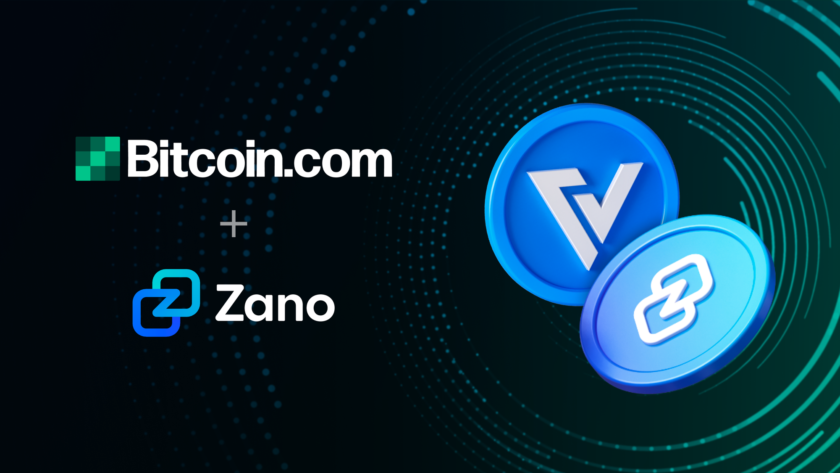Making consensus
CoinDesk is preparing for the invest: ethereum economy virtual event on Oct. 14 with a special series of newsletters focused on Ethereum’s past, present and future. Every day until the event the team behind Blockchain Bites will dive into an aspect of Ethereum that excites or confuses us.
The Top Shelf news you subscribed to is down below.
Now, a few words from CoinDesk tech reporter Colin Harper.
Centralized stablecoins
Stablecoin use on DeFi applications has exploded in 2020.
Approximately $20 billion of crypto dollars are floating around, and a few billion of these have found their way into the ether by way of yield farming and lending. Even Ethereum’s flagship DeFi application, MakerDAO, is flooded with USDC, making the stablecoin the largest collateral for Maker’s DAI stablecoin.
That’s right, a stablecoin is the primary collateral for another stablecoin. That’s how deep crypto dollars go into DeFi’s liquidity. Outside of Maker, DAI, USDC, TUSD and USDT are the most popular pools on Aave, with a collective market size of $650 million. Uniswap has roughly $780 million in USDC, USDT and DAI staked in market pools. On Compound, DAI and USDC are the first and third most popular markets with a staggering $1.4 billion locked.
As crypto dollars liquidity floods DeFi markets, will these tokens, which are centrally issued, threaten these application’s presumed decentralization? With bitcoin derivatives exchange BitMEX facing legal actions from U.S. regulators, questions have floated whether exchanges like Uniswap should worry about being targeted next.
Most DeFi proponents argue the “decentralized nature” of the exchange will excuse it from scrutiny. While the act of trading these assets may be considered decentralized, the assets themselves (namely, stablecoins) are not always decentralized. USDC, USDT, TUSD and PAX can be frozen and revoked by their central issuers.
If regulators wanted to come for DeFi, one weak point could be the stablecoin providers. This would even have implications for DAI, Ethereum’s so-called decentralized stablecoin, considering the bulk of its collateral comes from USDC.
Crypto dollars are obviously beneficial to DeFi’s market structure for the price stability they provide. This is largely why they have taken over as the dominant source of liquidity (even over ETH) in most markets.
But they are inherently centralized entities, and it remains to be seen how regulators are going to approach their use in DeFi lending and DeFi markets in general. This finally raises the question: Do stablecoins threaten DeFi’s perceived decentralization?
At CoinDesk’s virtual invest: ethereum economy program on Oct. 14, Circle CEO Jeremy Allaire and Aave Finance founder Stani Kulechov will discuss how integral stablecoins have become for DeFi in their talk “Stablecoins, Hyper-Collateralization and the DeFi Economy.”
Looking beyond this question, stablecoin use in yield farming and elsewhere has contributed to Ethereum’s skyrocketing fees. MakerDAO founder Rune Christensen and Near protocol co-founder Illia Polosukhin will discuss DeFi’s impact on Ethereum in their talk “The Fees are Too Damn High: DeFi Pushes Ethereum To its Limit.”
One may ask, how stable is a crypto ecosystem built atop stablecoins?
-Colin Harper
Featured panel
Frontends: Winning the Race for the DeFi User
The emergence of new infrastructure such as automated market makers, portfolio managers and aggregation tools has kick-started an arms race for end users. We explore how these products are lowering barriers to entry in the Ethereum economy, where and how value will accrue with these platforms and the growing migration of centralized exchanges looking to get in on the act.
Join Dragonfly Capital Partners’ Haseeb Qureshi, Huobi’s Ciara Sun and Zapper.fi’s Nodar Janashia from 5:30 – 6:00 p.m. ET, Oct. 14, for the livestream.
Weird DeFi
Ethereum’s highly anticipated 2.0 upgrade is poised to bring the network ever closer to fulfilling its original vision to be a “world computer” that plays host to a parallel, decentralized financial system.
At invest: ethereum economy on Oct. 14, we will address the ramifications for investors as decentralized finance takes the crypto world by storm.
In a run-up to the event, our two-part CoinDesk Live: Inside the Ethereum Economy virtual miniseries on Oct. 8 and Oct. 12 introduces trending narratives we will break down at the main event: Why all the hype behind yield farming and food-inspired tokens? Should investors take them seriously or are they a fading trend?
On Oct. 8, CoinDesk senior business reporter Brady Dale hosts Priyanka Desai of Open Law, Mason Nystrom of Messari and Sam Bankman-Fried of FTX to assess the newest crazes sweeping the DeFi landscape.
Ethereum 101
Decentralized finance (DeFi) has seen explosive growth in 2020. This time last year, the total value locked (TVL, a way to quantify how much capital is following through the various decentralized protocols) was around $530 million. Today, there’s more than $10 billion sloshing around.
In February, CoinDesk’s Brady Dale covered the moment the ecosystem crossed the $1 billion milestone, opening the door to further heights and raising questions about its longevity. Here’s why that mattered:
$1B moment
It was only December when the entire decentralized finance (DeFi) market was worth less than $700 million. [On Feb. 7,] it hit $1 billion, a figure that even the most fervent blockchain skeptics would have a tough time dismissing as meaningless.
That figure is the measure of all the crypto held in projects that lend, hedge, abstract, swap or otherwise make structured bets using ethereum’s smart-contract powers, as totaled by DeFi Pulse.
To be clear, $1 billion is not how much money people are making on DeFi, but how much they have committed. Their “locked-in” collateral is used on various protocols to make a wide array of bets, from simple loans to complex derivatives.
“It proves that people around the world want access to more efficient, less biased, money,” Rune Christensen, the creator of DeFi leader MakerDAO, told CoinDesk via a spokesperson.
Investor Spencer Noon of DTC Capital struck a similar note in an email to CoinDesk:
“No other smart contract platform comes close in terms of its developer mindshare, tooling and infrastructure, to the point where I don’t believe DeFi could exist anywhere else today. And perhaps most surprisingly, we’re finally seeing a credible case for ETH to accrue a long-term monetary premium as the only truly trustless collateral type in decentralized finance.”
But nothing big happens on Ethereum without Bitcoin diehards mocking it. In this case, former bitcoin developer Peter Todd weighed in, tweeting, “Decentralized smart contracts can’t hold people accountable for debt. For that you need guns.”
And rapid growth doesn’t always continue. For comparison, Kickstarter, the leading crowdfunding site, launched in 2009. It hit $1 billion in pledges in 2014. Six years later, it still hasn’t quite touched $5 billion.
Still, DeFi got there a lot quicker, and it’s much more complex than crowdfunding.
Ryan Sean Adams, a crypto investor and ETH booster on Twitter, tweeted the news, writing: “Software eating money. Software eating banks. The next decade will be wild.”
At stake
Of course, much of this explosive growth was prefigured by the success of the decentralized lending platform MakerDAO. One of the earliest DeFi protocols, how Maker works still boggles many minds.
CoinDesk’s multimedia team broke down how “the Godzilla of DeFi” creates DAI, why stablecoin interest rates fluctuate and what it means to collateralize crypto in this video from 2019.
Making MakerDAO
Stablecoins. The name is a bit of a misnomer. In theory, stablecoin prices are pegged to various fiat currencies or hard monies, like gold or silver, in an effort to keep the crypto tokens price, you guessed it, stable.
The benefits to a business that a stable token could provide are great. A stablecoin makes finance far easier than a volatile coin. Since the price is predictable, budgeting becomes less of a headache. But in practice this is a tough solution to make work. Take dai (DAI) for instance, the stablecoin designed by the Ethereum project MakerDAO.
In the last four years MakerDAO has become the most popular decentralized finance application on Ethereum. The MakerDAO project includes two tokens: MKR and dai: Dai is the stablecoin, MKR is the governance token.
While both tokens can be purchased directly on exchanges, dai is created when users of the system lock up ether (ETH). When users lock up ETH they can withdraw dai, which maintains a soft peg to the U.S. dollar.
Users can withdraw up to two thirds of the value of ether that was locked up. So someone depositing three hundred in ETH at today’s prices could then borrow up to around 50,000 dai, which would be worth roughly $50,000.
Yet, because the price of ether fluctuates so much, the MakerDAO system encourages users to over-collateralize. Meaning they’ll have to lock in more ether than they’ll get back in dai.
Much like a traditional credit card, dai loans accrue interest. In January of 2019, the interest rate, or stability fee, for a dai loan, was 0.5%. Sounds like a good interest rate compared to what banks offer.
Fluctuations
But that low rate hasn’t remained. Over the spring of 2019, dai interest rates have fluctuated dramatically. Dai’s price is kept one-to-one with the dollar by backing the token with an equal amount of debt. If there is more dai in the world than the market demands, an oversupply, the price will drop. So the system began to adjust by increasing the interest rate on all borrowers in order to encourage them to pay down part of the amount they took a loan for or close the line of credit altogether.
When people pay down their debt they pay it with dai, that dai gets burned or destroyed, which contracts the overall supply. A smaller supply should drive the price back up.
In order to close a loan, the user can only repay the principal with dai. They have to repay the interest accrued in MKR, both those coins are then burned as debt gets retired. Dai is destroyed because dai is only backed by debt. So without that debt in the ecosystem those coins are not needed. MKR is destroyed as an incentive for the MakerDAO community.
A dai loan could also be liquidated automatically. Should a person’s collateral dip below the minimum 150% collateralization, the system will liquidate their ETH holdings with a 13% penalty fee. That’s on top of the interest owed as well.
It’s a fee big enough few users want to get hit with. This is why rapid increases in the interest rates has been so controversial.
DAOs and decision makers
So who decides when to increase the interest rate and by how much. To explain that we have to explain one more concept: decentralized autonomous organizations or DAOs.
The idea of the DAO is that lots and lots of people can manage and run an organization taking advantage of the wisdom of the crowd to make the optimal choice.
MakerDAO is a programmatic loan system but it’s also a DAO, governed by people who hold its MKR token. They get to decide on things like the interest rate, how much of one type of loan can be issued and more.
The MKR token has been attractive to hold: As long as people keep taking out dai loans and repaying them, the value should go up as MKR tokens get burned and interest is repaid.
Holding MKR also gives participants the chance to be a decision maker in an interesting new kind of financial organization. Collectively these people pay attention to the price of DAI and decide whether or not the interest rate needs to go up and down.
As pioneers of a new financial instrument there’s not much prior data for MKR holders to draw on to make an optimal decision. Nevertheless, as of this recording dai’s price appears to have returned to a steady dollar valuation across major cryptocurrency exchanges and over-the-counter trading desks.
In that way MakerDAO functions as one of the best versions of a decentralized autonomous organization the industry can point to so far.
– Christine Kim, Brady Dale and Bailey Reutzel
The ledger
Snap back to 2020 again and you can see how much the ecosystem has evolved. MakerDAO is just one of many multi-billion dollar protocols. A range of other lending, trading and minting tools have either launched or finally gained tractions.
Last month, during the heady days of the “Weird DeFi” moment, my former colleague Leigh Cuen wrote about the “normies” getting filthy rich using this ecosystem of products.
Making money
Ethereum whales undoubtedly drive the decentralized finance (DeFi) movement, but many people making money on DeFi trends are just regular Joes, so to speak.
One such trader, Joe, is a math student at a Canadian university. Just by playing with Ethereum software and his own calculations, he managed to make hundreds of thousands of dollars in 2020. This wasn’t his first rodeo, however; he’s been trading on decentralized exchanges (DEXs) for more than a year.
“I’m not a whale in the crypto world but I’m one of the top users of the DeFi protocol I use,” he said. “Before, when DeFi was smaller, there was a lot less competition.”
Since Weird DeFi’s food craze began, Joe said “high yields” are now available to newcomers “without a lot of technical knowledge.”
DeFi infrastructure
The DeFi mentality emphasizes open-source access to tools, services with low barriers to entry and distributed teams. Sometimes, this includes low barriers to entry for high-risk games.
According to Uniswap founder Hayden Adams in June 2020, most of the Uniswap ecosystem relies on ConsenSys infrastructure services, like Infura. This has also proven to be the common pattern for copycat DeFi projects like SushiSwap. ConsenSys spokesperson James Beck said the Ethereum conglomerate restructured to make infrastructure and wallet services, like Infura and the DeFi-friendly wallet MetaMask, pillars of the company’s “core software business.”
ConsenSys’ head of product for Infura, Michael Godsey, said his team handled the “increased usage” from the food-themed yield farming spike, watching closely to understand “these new usage patterns.” Such DeFi experiments provide inspiration and research data for Ethereum startups, not chagrin.
In reference to the DEX tools people use to access these trading games, Godsey added, “Uniswap and MetaMask are two of our amazing customers and many yield farmers are utilizing their platform to participate in this new activity.”
As for Joe, the Canadian college student, he said he plans to keep stacking tokens because the broader DeFi movement is “sustainable and has been growing at a relatively slow pace for years.”
On the other hand, he said the trends over the past few months were heavily influenced by Compound’s token model. Joe reasoned these DeFi experiments might end in a “big crash” or slow fizzle.
“As long as risk-adjusted yield is higher than for other opportunities, I will keep using them,” he said.
Top shelf
U.S. constraints
Ripple Executive Chairman Chris Larsen threatened to pull his fintech firm out of the U.S. if what he termed the country’s hostile stance toward cryptocurrency companies does not soon change, according to Fortune. Ripple is battling investor allegations that XRP is a security as well as mixed signals from the U.S. Securities and Exchange Commission. Larsen acknowledged that Ripple’s leaving the U.S. would do little to stop top-line federal regulatory oversight but said a softer host government would nonetheless help, adding nearly every other country has a better handling of crypto than the U.S. Larsen named Singapore and the U.K. as possible countries to rebase in.
New addresses
Bitcoin has seen a rapid rise in the creation of new addresses on the blockchain so far this month, with one industry executive saying it’s likely due to traders moving funds off the legally troubled BitMEX exchange. Others point elsewhere. Glassnode’s “entities net growth” metric rose sharply by 244% from 9,750 to 33,620 in the first six days of October. The surge in new entities picked up pace in the wake of BitMEX’s legal woes users’ panicked migration of funds to other exchanges. However, on-chain analyst Cole Garner said the spike probably represents an entry of new investors into the market, because the growth in new entities has kept pace, even after BitMEX withdrawals slowed.
CoinDesk U
CoinDesk researched and assembled a ranking of universities that provide the best blockchain education. This in-depth analysis measured the school’s scholarly impact, post-graduation job prospects and campus blockchain offerings – as well as survey responses – to determine the 46 top U.S. universities. Topping the list are Massachusetts Institute of Technology (MIT); Cornell University; University of California, Berkeley; Stanford University and Harvard University. Many smaller regional, or liberal arts, universities also made the list. Read the full methodology.
Digital yuan
An official for China’s central bank has unveiled usage statistics of state-backed digital currency trials that were conducted in three Chinese cities. Fan Yifei, deputy governor of the People’s Bank of China, said on Monday the bank opened 113,300 consumer digital wallets and 8,859 corporate digital wallets for residents of Shenzhen, Suzhou and Xiong’an to pilot a digital yuan. The digital wallets processed RMB 1.1 billion ($162 million) across 3.1 million digital yuan transactions between April and August when the pilots launched and ended, Fan said, making it the most widely used central bank digital currency (CBDC) in a commercial setting.
Token swaps
MetaMask announced a new feature Tuesday: token swaps directly within the popular Ethereum browser extension and mobile application. The token-swapping feature will release first on its Firefox browser extension, before adding extensions for other browsers and MetaMask mobile. Up to now, to make a swap of tokens, an Ethereum user would need to go to the website of a specific decentralized exchange or exchange aggregator, sign in and run the swap. By building a token-swapping function into MetaMask itself, it should improve the user experience by automatically routing users to a service, cutting out a step.






